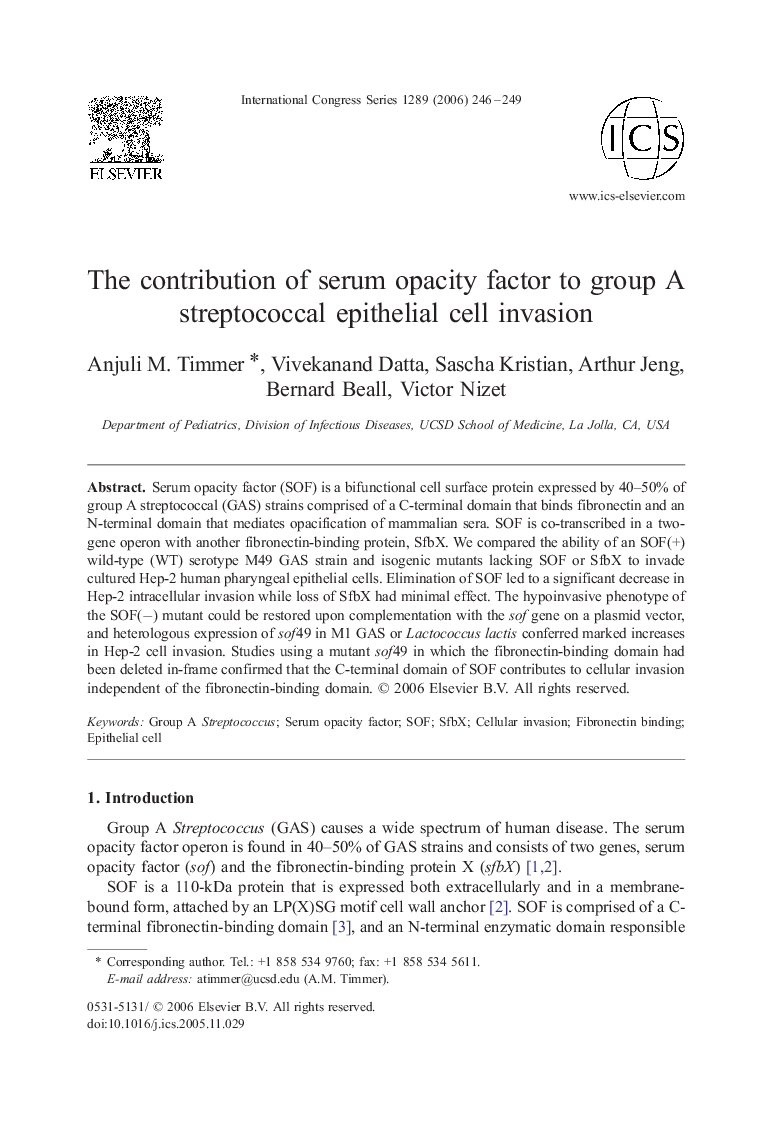| Article ID | Journal | Published Year | Pages | File Type |
|---|---|---|---|---|
| 2577449 | International Congress Series | 2006 | 4 Pages |
Serum opacity factor (SOF) is a bifunctional cell surface protein expressed by 40–50% of group A streptococcal (GAS) strains comprised of a C-terminal domain that binds fibronectin and an N-terminal domain that mediates opacification of mammalian sera. SOF is co-transcribed in a two-gene operon with another fibronectin-binding protein, SfbX. We compared the ability of an SOF(+) wild-type (WT) serotype M49 GAS strain and isogenic mutants lacking SOF or SfbX to invade cultured Hep-2 human pharyngeal epithelial cells. Elimination of SOF led to a significant decrease in Hep-2 intracellular invasion while loss of SfbX had minimal effect. The hypoinvasive phenotype of the SOF(−) mutant could be restored upon complementation with the sof gene on a plasmid vector, and heterologous expression of sof49 in M1 GAS or Lactococcus lactis conferred marked increases in Hep-2 cell invasion. Studies using a mutant sof49 in which the fibronectin-binding domain had been deleted in-frame confirmed that the C-terminal domain of SOF contributes to cellular invasion independent of the fibronectin-binding domain.
